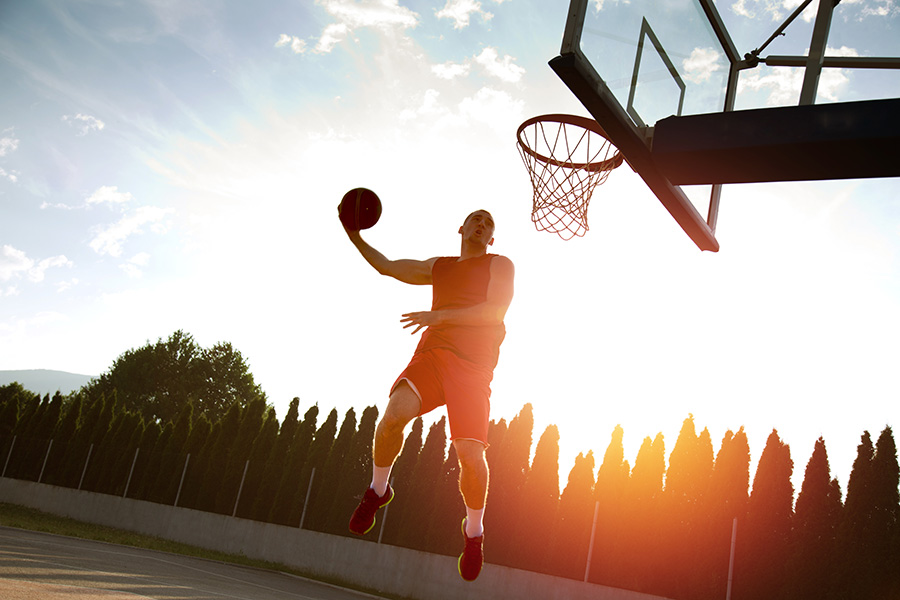
Basketball and volleyball are sports where athletes spend a lot of time jumping as they attempt to get balls in or over nets.
Knees take a lot of stress, particularly for athletes playing in these competitive sports. In fact, playing basketball and volleyball require running and jumping that exert a force on the knees of up to nine to 11 times one’s body weight. All that jumping can cause a knee injury known as patellar tendonitis or jumper’s knee.
Patellar tendonitis is a chronic overuse injury to the patellar tendon.
The injury, commonly found in people who play basketball or volleyball, causes inflammation as a result of chronic, repetitive jumping and excessive exertion of the knees.
Left untreated, jumper’s knee can result in prolonged pain during and after the activity and an inability to perform at a high level.
The repetitive stress of continued play can lead to micro-tears or a complete rupture of the patellar tendon.
It is best to recognize and treat the condition early to minimize lost time due to the injury.
Patellar Tendonitis Symptoms
- Kneecap laxity (looseness) or an unstable kneecap, which includes pain, swelling and inflammation of the kneecap
- Hamstring tightness, indicated by poor flexibility in the back of the thigh
- Calf tightness, which is identified by poor flexibility in the rear of the ankle
- Muscular imbalance, or disparity between muscle size in legs, which can cause muscle shrinkage
To prevent patellar tendonitis, athletes should have a thorough pre-, mid- and post-season strength and conditioning exercise program, as well as maintain lower extremity flexibility.
Weight lifting and cardiovascular workouts are good methods of avoiding jumper’s knee.
Patellar Tendonitis (Jumper's Knee) Treatment
Treatment for jumper’s knee involves resting, applying ice to the injury, compressing the injury and elevating the affected area.
R-I-C-E Method:
- Rest the knee by avoiding any activity that causes too much pain.
- Ice: Apply ice to the knee 5-10 minutes at a time, at least 3-4 times per day.
- Compression: Apply a compression ACE wrap or knee sleeve for gentle compression, to provide pain relief and stability.
- Elevate the leg/ knee above the heart to reduce swelling and pain.
The athlete can still use many machines in the gym or ride a bicycle. You want to stay active to avoid muscle atrophy and weakness.
In addition, an over-the-counter anti-inflammatory, such as ibuprofen, is used as part of the treatment. Athletes can run a risk of re-injury if they do not participate in strength and conditioning exercises.
Individualized Treatment Approach
Each individual with patellar tendonitis must be approached differently. Treatment depends on the phase of the injury, whether it is acute or chronic.
There is no timeline in recovering from jumper’s knee - recovery may take a week for one person and a month for someone else.
Jumper’s knee is most often found in adults aged 30 or older, especially those “weekend athletes” who do not regularly do strength and conditioning exercises.
The condition is also frequently found in children ages 10-16 because their muscles are still growing and developing.
Find Personalized Care
Dr. Javier Rios treats a variety of sports injuries, including jumper’s knee, allowing the active patient to return to their desired activity level in a safe, effective, and timely manner.
Contact Us
For more information on how you can safely get back on the court, contact us at https://www.jriosmd.com/contact-us-orthopedics-sport-medicine-houston-tx/











